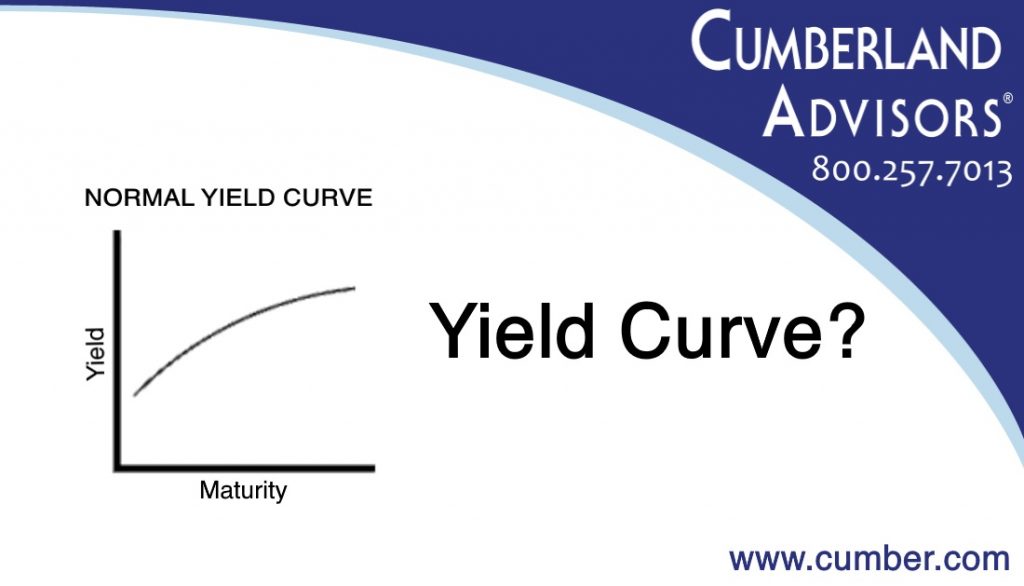A while ago we wrote about a one-time tax-code change and why it might be causing the yield curve to flatten. Here is that commentary: “Why the Yield Curve Is Flat & Why It May Steepen” (https://www.cumber.com/why-the-yield-curve-is-flat-why-it-may-steepen/).

Now we are past the September Treasury note and bond auction and past the tax-code-change deadline. So will the yield curve steepen? Flatten? No change?
We think it will steepen, but we recognize that forecasting the yield curve is notoriously dangerous. The standard quip is that economic forecasters were created to make astrologers look good.
Many factors impact the yield curve. We happen to think that the tax-code regime change is one of them, and we may be able to confirm that quickly (within a month or two). The reason is that the tax-code change caused a one-time shift of demand-driven buyers. They allocated away from Treasury bills (their preferred habitat) to long-term Treasury strips, derived mostly from newly auctioned Treasury 30-year bonds (market segmentation).
That process is now finished, so we expect a normalization to steepen the yield curve again. Of course, there could be other factors at work as well. There always are.
The Fed is divided on this subject. Boston Fed President Eric Rosengren recently said, “I don't take as much information from the yield curve as some other people. It is one of many things I look at, but I don't give it a special attribute in terms of telling us cyclical changes.”
Peter Boockvar notes how this statement stands in contrast to those of other Fed members such as St. Louis Fed President Jim Bullard or Atlanta Fed President Raphael Bostic. Boockvar argues that Fed members should always give the yield curve special attention. I agree.
Let’s put this into a numerical perspective. By year-end, the short-term overnight risk-free rate will be above 2% and may be close to 2.5%. The 10-year Treasury yield may stabilize between 3% and 3.5%. If it is well under 3%, the yield curve would be very flat, and forward rate calculations would be worrisome. The long-term 30-year Treasury bond could be 3.5% or higher.
Let’s call that a baseline scenario and recognize that it could easily prove to have been an erroneous forecast within three months. Also note that forecast errors may be in either direction and that confidence is low in the accuracy of this scenario.
So what does a bond portfolio manager do?
The answer is to seek active bond choices with a rationale that works to the advantage of clients. Remember, the bond market frequently offers an anomalous pricing structure, and the challenge for the bond manager is to be sharp and to seize it quickly before the anomaly disappears.
Here is an example. When the 30-year Treasury bond was recently in the market at a yield of about 3.1%, we purchased very-high-credit-quality, tax-free new issues at 4% and slightly higher yields. The durations of those munis were not far away from those of the Treasury bond. The Treasury is taxable while the munis are not, so a tax-arbitrage cushion favors the muni bondholder.
The spread was so enticing that we also bought the tax-free bond in certain types of portfolios that do not pay taxes. Why? Because getting an extra point in yield while having a downside price cushion is a gift to the client.
Did we sacrifice credit quality? No. The bonds were all very-high-grade, with ratings of AA to AAA.
In sum, we expect the yield curve to steepen. There are ways to deal with that risk. You don’t have to sacrifice credit quality to do it. And when the tax-free yield exceeds the taxable yield, a crossover buyer will quickly become active.
Now let’s wrap up by offering serious readers three links to research pieces that discuss the shape of the yield curve and influences on Treasury interest rates.
“The Effect of the Federal Reserve’s Securities Holdings on Longer-term Interest Rates.” Brian Bonis, Jane Ihrig, and Min Wei. FEDS Notes, Board of Governors of the Federal Reserve System, April 20, 2017. https://www.federalreserve.gov/econres/notes/feds-notes/effect-of-the-federal-reserves-securities-holdings-on-longer-term-interest-rates-20170420.htm
“Predicting Recession Probabilities Using the Slope of the Yield Curve.” Peter Johansson and Andrew Meldrum. FEDS Notes, Board of Governors of the Federal Reserve System, March 1, 2018. https://www.federalreserve.gov/econres/notes/feds-notes/predicting-recession-probabilities-using-the-slope-of-the-yield-curve-20180301.htm
“Information in the Yield Curve about Future Recessions.” Michael Bauer and Thomas Mertens. FRBSF Economic Letter, Federal Reserve Bank of San Francisco, August 27, 2018. https://www.frbsf.org/economic-research/publications/economic-letter/2018/august/information-in-yield-curve-about-future-recessions/
David R. Kotok
Chairman and Chief Investment Officer
Email | Bio
Links to other websites or electronic media controlled or offered by Third-Parties (non-affiliates of Cumberland Advisors) are provided only as a reference and courtesy to our users. Cumberland Advisors has no control over such websites, does not recommend or endorse any opinions, ideas, products, information, or content of such sites, and makes no warranties as to the accuracy, completeness, reliability or suitability of their content. Cumberland Advisors hereby disclaims liability for any information, materials, products or services posted or offered at any of the Third-Party websites. The Third-Party may have a privacy and/or security policy different from that of Cumberland Advisors. Therefore, please refer to the specific privacy and security policies of the Third-Party when accessing their websites.
Sign up for our FREE Cumberland Market Commentaries
Cumberland Advisors Market Commentaries offer insights and analysis on upcoming, important economic issues that potentially impact global financial markets. Our team shares their thinking on global economic developments, market news and other factors that often influence investment opportunities and strategies.

